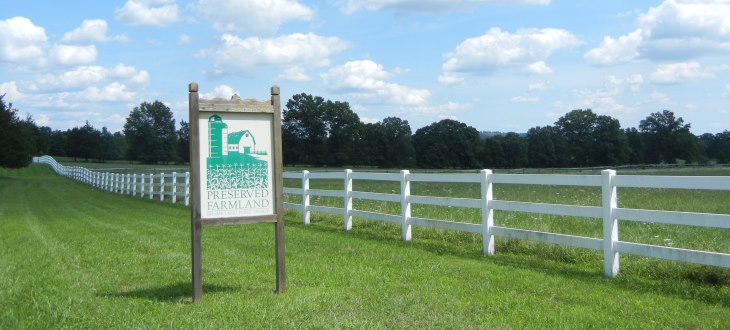The State We're In
Grow crops, not solar panels, on NJ’s best farmland
If there’s any doubt that New Jersey is the Garden State, visit a local farm stand or farmers’ market. This time of year, you’ll find some of the world’s most delicious produce: fresh Jersey tomatoes, peaches, sweet corn, peppers, blueberries, melons, squash and much more.
What makes them so good? One key ingredient is excellent soil. New Jersey has some of the best agricultural soils on Earth, perfect for growing a wide variety of foods.
These “prime” and “statewide important” soils are an incredibly precious natural resource that should never be taken for granted or squandered!
That’s why a proposed law to encourage large utility-scale solar projects without provisions to keep it off our best farmland and open space is a bad idea, no matter how well intentioned it may be.
The proposed legislation, S2605, would toss out New Jersey’s existing solar siting policies, including provisions to restrict solar on farmland and redirect it to sites like brownfields, landfills, rooftops and parking lots.
The proposed law would not only make it easier to build large, utility-scale solar arrays on the state’s best farmland, it would also allow forests to be clear-cut to make way for solar projects, which makes no sense. Forests store the equivalent of 8 percent of New Jersey’s annual greenhouse gas emissions.
Make no mistake, encouraging solar energy is essential and it is a critical part of New Jersey’s clean energy future. By using a mix of solar, offshore wind and other clean technologies, this state we’re in plans to transition to 100 percent clean energy by 2050 for its power supply. Reducing the state’s reliance on fossil fuels is critical to combating climate change.
But solar energy projects must be built in the right places. And high-quality farmland and forests are most definitely not the right places!
The state’s Farmland Preservation Program has permanently preserved over 230,000 acres of farmland to date, out of New Jersey’s 720,000 acres of farmland. An additional 220,000 acres of preserved farmland are needed to sustain the agricultural industry in New Jersey, according to the State Agricultural Development Committee (SADC).
Thousands of acres of high-quality farmland have been designated by the state and counties as “Agricultural Development Areas” and targeted for permanent farmland preservation.
It is counter-productive to encourage these high-quality agricultural lands, targeted for future preservation, to become available for utility-scale solar. For example, the proposed legislation could encourage projects like Dakota Power’s massive proposed solar facility on over 800 acres of top-quality farmland that is a target for preservation in Pilesgrove Township, Salem County.
Clearing forests makes no sense. In the battle against climate change, forests are powerful fighters. Forests pull carbon from the air and sequester it, they cool the air temperature in summer, provide habitat for wildlife and filter rainfall to protect local water quality. New Jersey needs more, not less, forests!
While some forests in the Highlands and Pinelands regions are excluded, the proposed legislation would open up forests in the Highlands Planning Area and places like the Sourland Mountains – a target of current open space preservation efforts – to large solar projects. Forests in the Sourlands are among the most effective in the state at storing large amounts of carbon.
And what about the ratepayers? As currently written, the law wouldn’t require solar developers to bid competitively for state financing, so an overly expensive project could potentially cost electric customers more money than necessary. That’s why New Jersey’s Ratepayer Advocate has raised concerns about the legislation.
New Jersey can do better! We can have both preserved and protected farmland and forests, and appropriately sited solar projects. If we’re smart enough to plan and think this through, we can reap the benefits of clean energy AND protect our most valuable farmland and forests.
In order to ensure solar is sited appropriately, the state should better define areas that are considered marginalized, as called for in the Energy Master Plan – that is, those with constrained economic or social value.
For example, there are areas of non-preserved farmland that may have poor soil conditions, or non-pristine, non-forested lands that are underutilized, both of which could potentially host solar projects while not compromising the state’s commitment to preserve open space and farmland. This requires a thoughtful planning effort, which should not be hard in the age of computer mapping when so much knowledge of local soil and land use conditions can be evaluated online!
Let’s expand New Jersey’s commitment to renewable energy while still protecting the state’s most valuable farmland and open spaces. Our children and grandchildren deserve both clean energy and access to fresh produce and abundant forests.
Tell your legislators to fix or oppose S2605, to advance solar energy without sacrificing our best farmland and forests. To find your legislator, go to https://www.njleg.state.nj.us/members/legsearch.asp.
To learn more about preserving New Jersey’s land and natural resources, visit the New Jersey Conservation Foundation website at www.njconservation.org or contact me at info@njconservation.org.
About the Authors
Alison Mitchell
Co-Executive Director
John S. Watson, Jr.
Co-Executive Director
Tom Gilbert
Co-Executive Director, 2022-2023
Michele S. Byers
Executive Director, 1999-2021
View their full bios here.
Filter
Get The Latest News
From The Garden State
In the
News

